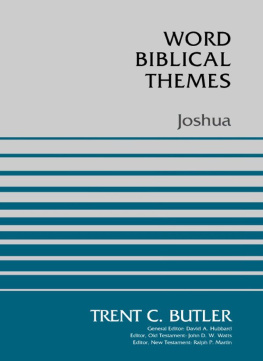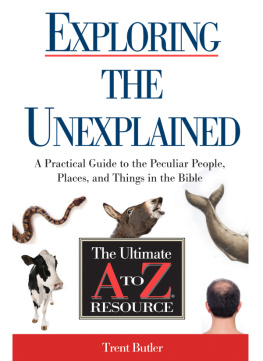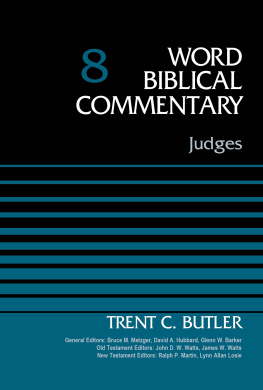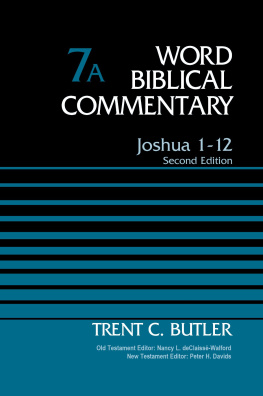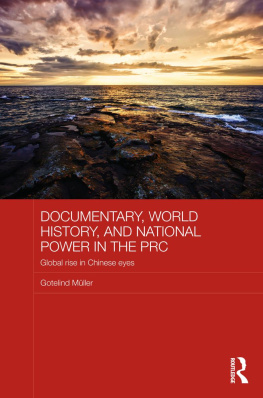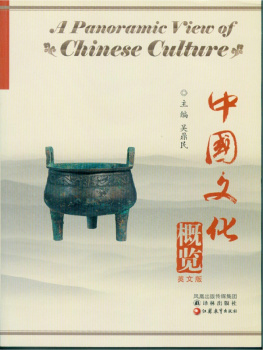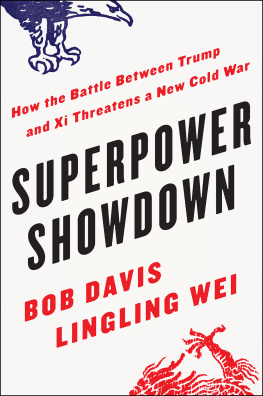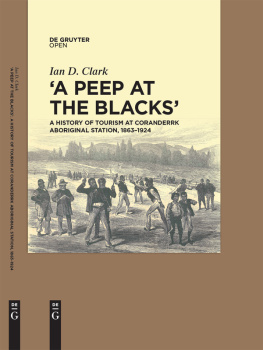Praise for Six Ways to Study the Bible
Trent Butler demonstrates that reverence for Scripture need not preclude asking probing questions about the texts origin, transmission, and meaning. In an engaging style, Butler welcomes readers into deeper dialogue with the Bible, uncovering the mysteries of study Bible notes and commentators jargon. By preceding the chapter on devotional study, the queen of Bible study, with guides to textual, literary, historical, exegetical, and theological study, Butler shows how all of these enrich the meaning of the text. Students of the Bible who want to go beyond what other people tell them, but dont know how to start, should grab Butlers book and dig in.
Sandra Hack Polaski, author of A Feminist Introduction to Paul
Six Ways to Study the Bible is a comprehensive tool for any student of the Bible. Outlining six approaches for digging deeper into the text, it provides examples of how to do these and includes exercises the reader can use to practice. An excellent list of Bible study resources is also included. Teachers and students of the Bible in the local church will find this a useful addition to their toolbox of biblical study aids.
Karen Tye, author of Basics of Christian Education
A good resource for highly motivated laypeople, this book takes readers on an in-depth journey through six different ways of reading the Bible. It will repay its readers with helpful suggestions about these different approaches.
David M. Howard, Jr., Bethel Seminary, St. Paul, Minnesota
Just as a master craftsman is one who is an expert in working with the tools of his craft, so an educated Bible reader is one who is trained in using the tools of biblical study. In Six Ways to Study the Bible, Trent Butler introduces readers to six of the most important tools they should have in their tool belts in order to study the Bible effectively. This slim volume, written by a veteran Bible scholar with the heart of a pastor, would make an excellent preparatory text for church Bible study groups and introductory level college classes.
Ralph K. Hawkins, Kentucky Christian University
To Dr. Paul Redditt,
Friend for Life
Six Ways
to Study
the BIBLE
TRENT C. BUTLER

Copyright 2010 by Trent C. Butler.
All rights reserved. For permission to reuse content, please contact Copyright Clearance Center, 222 Rosewood Drive, Danvers, MA 01923, (978) 750-8400, www.copyright.com.
Copyright information for the Bible translations quoted in this book is on page 162.
Cover art: iStockphoto
Cover and interior design: Elizabeth Wright
Visit Chalice Press on the World Wide Web at
www.chalicepress.com
10 9 8 7 6 5 4 3 2 1 | 10 11 12 13 14 |
EPUB: 978-08272-34772 EPDF: 978-08272-34789
Library of Congress CataloginginPublication Data
Butler, Trent C.
Six ways to study the Bible / Trent C. Butler.
p. cm.
ISBN 978-0-8272-3470-3
1. BibleHermeneutics. I. Title.
BS476.B87 2009
220.6dc22
2009047114
Printed in the United States of America
Contents
Acknowledgments
This small volume grows out of a lifetime of ministry in the churches of Gods people. Any skills I have in Bible study go back to encouragement and direction from Dr. Don Williams at Southern Baptist Theological Seminary and Dr. Leander Keck at Vanderbilts Graduate School of Religion. Strong encouragement along the way came from numerous people, especially Dr. Page Kelley, Dr. J. D. W. Watts, Dr. Paul Redditt, and Dr. Marvin Tate. Lessons along the road came from students at the International Baptist Theological Seminary in Rschlikon, Switzerland, and at Southern Baptist Theological Seminary. Opportunities to develop thoughts in this book came under the tutelage of Johnnie Godwin and in the life of Brentwood Baptist Church, Hopewell Baptist Church, Judson Baptist Church, First Baptist Church Gallatin, College Heights Baptist Church, and First Baptist Church of Hendersonville. My gratitude goes to all those people who have nurtured and encouraged my love for Scriptures through the years.
Of course, the greatest sacrifice for the work on this book came from my dear wife, Mary Martin, and Mary Webb who fended for themselves so often while I retreated to the computer. I also wish to thank Russ White, Pablo Jimnez, and the people at Chalice Press for enduring with me while I completed this manuscript. May the input of all these people be proven worthwhile as this volume goes out to the glory of God.
Introduction
The art of Bible study is learning to ask the right question at the right time.
What questions do you ask as you study the Bible?
Do you ask different questions when you are going to teach a lesson, when you are preparing to be part of a Bible study someone else is teaching, and when you are simply having a quiet devotional reading?
How are these Bible study preparations different?
I want to share with you what I think are the basic tools you should have as you study and the basic information you should be able to put your fingers on. Remember, education is not how much you know, but how quickly you can find what you need to know.
This book will introduce you to six different ways to do Bible study in different settings. You can add, subtract, or combine as you desire. Combining all six will bring you to a comprehensive understanding of the history behind the text, the actual text itself, the nature of the text, and the theological and practical meanings of the text. To do so, we will look at four texts from different time periods, in different styles, from different literary genres, and with different theological purposes. Except for the textual section, the texts used are Joshua 2, Psalm 137, Mark 8, and Philippians 2. In each type of study, you will see examples of how to do the type of study and will be given an exercise for doing the study on one of the passages for yourself.
Textual Study
The most difficult phone calls I had while managing the Bible section at Holman Bible Publishers came from people using the New International Version and wanting to know why certain verses were not in their Bible, why even the verse numbers were not there. Textual study of the Bible shows you how to answer such questions.
The resources you have for this are in study Bibles. They come in the footnotes and center or side column references of the Bible and show you that many verses have different readings in different Bible manuscripts. Before you can do serious Bible study, you need to be able to interpret these footnotes and understand what they mean. If you really get serious at this study, you will go to a commentary such as the Word Biblical Commentary, the Anchor Bible, or the New International Commentary. Such resources give you a special section on textual notes.
Take a quick glance at five passages using the King James Version, the New American Standard Version, and one modern version such as the New International Version, the Holman Christian Standard, the New Revised Standard, or the Revised English Bible. The passages are Joshua 21:3538; Genesis 4:8; Judges 6:1314; Mark 16:9; and 1 John 5:8. What differences do you discover in the translations of these verses? Can you explain why the translations differ or perhaps do not even include these verses? Our first chapter will seek to explain these differences and alert you as to how to discover and understand similar differences in other passages.
Next page

